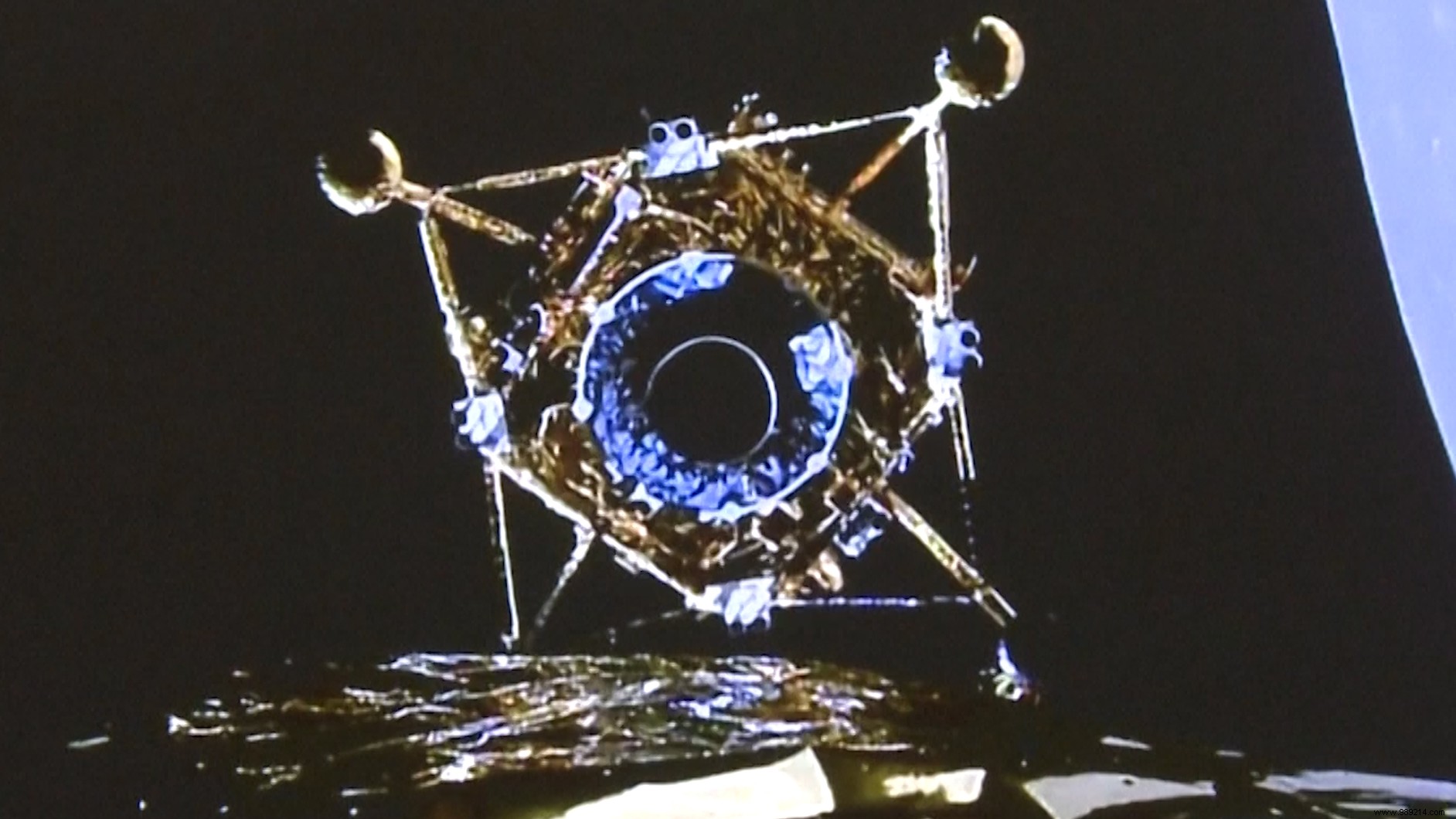Done! the lander of the Chinese mission Chang'e 5 successfully landed a few hours ago, according to state media. Objective:collect about two kilos of samples and bring them back to Earth.
On November 23, China successfully launched its Chang'e 5 mission, which aims to bring back to Earth the first new lunar samples since the American Apollo program (1969 to 1972) and the Soviet Luna 16 mission (1970). As a reminder, China already has three active spacecraft on the lunar surface:the Chang'e 3 lander, which arrived in 2013, as well as the Chang'e 4 lander and its Yutu 2 rover, which landed "from 'other side' of the Moon in January 2019.
So far everything seems to be going as planned. The ship was indeed correctly inserted into lunar orbit on November 28 , five days after its launch from the Wenchang space base. The orbiter (which includes the return spacecraft) and its lander (which also includes the ascent module) then separated the next day at 8:40 p.m. French time.
This operation therefore prepared the ground for the planned moon landing near the summit of Mons Rümker, a mountain range rising in the northwestern part of the Ocean of Storms. "The spacecraft is functioning well and communication with ground control is normal “, officials from the China Space Administration (CNSA) said at the time.
The latter had not communicated on the precise date of this operation. The public news channel CGTN has finally announced the success of this moon landing.

The announced objective of this Chang'e 5 mission will be to collect about two kilos of samples drilled. Because Chang'e 5 is solar-powered, this mission will need to be completed in a maximum of two Earth weeks, which is before sunset in the region (a lunar day lasts about 29 Earth days, so most lunar sites receive two weeks of continuous sunshine followed by two weeks of darkness).
These samples will then be sealed in the ascent vehicle which will take off in order to reach the orbiter and deliver the rocks to it. Finally, the orbiter will begin the journey back to Earth about six days later. It should normally drop its precious "booty" in Inner Mongolia around mid-December .

If the mission is successful, planetary scientists will test some key theories about the origin of the Moon and the rocky planets of the inner solar system.
The age of a rocky body can indeed be estimated based on the number of craters. Concretely, the longer a body has existed, the more its surface will be bombarded. However, this is not a very precise measurement. So far, estimates of the age of Mons Rümker and its surroundings, derived from the number of impact craters on it, have varied from over three billion to one billion years.
The absolute age of the returned samples will this time be determined by radiometric dating. It is a method to calculate the relative proportions of particular radioactive isotopes (elements with more or fewer particles in the atomic nucleus than the standard substance) contained in rocks. These efforts will then help to accurately determine the age of this particular lunar surface, but also to refine our models aimed at better understanding the surfaces of Mars, Mercury and Venus.